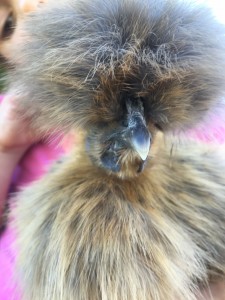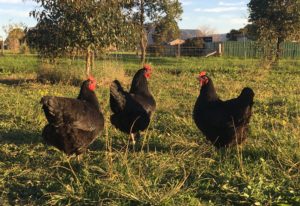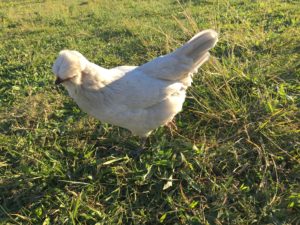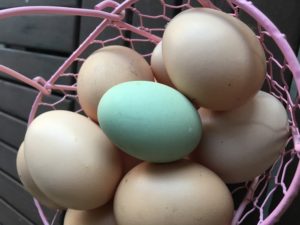There are many things to consider when selecting chickens to add to your family. Do I want them to provide eggs or as a pet for the kids? How will they get along with our other pets?
What breed of chickens:
There is a lot of personal preference when it comes to breed selection but there are a few points to consider.
Things to consider when selecting a breed:
- Temperament: you may want chickens that make good pets for kids. Silkies or Isa brown have lovely temperaments and tolerate handling well.
- Size: bantam or large breed. Bantams will lay smaller eggs than normal but you may be able to fit more birds in your planned space.
- Egg laying: how productive will the chicken be and how long will it lay for? Isa browns are a popular commercial layer but may not lay for more than a couple of years. Given chickens can live for up to 10 years this is not a very long time. Old fashioned breeds such as Australorps or Rhode Island Red’s are more likely to lay eggs over a longer life, although all chooks will drop off egg production after the first 2 years. Unless you are going to cull your chickens when they finish being productive you should choose a breed that is likely to give you eggs for a longer period.
- Looks: as superficial as it may be, we are all drawn to a breed we like the look of. Chickens come in a range of colours and patterns and can be very beautiful. You may even want a blue/green egg laying Araucana! Take a look at this Chicken Breeds Chart for a list of different breeds available.

Kids love these gorgeous fluff ball Silkies but you do need to trim the feathers around their eyes so they can see!
How many Chickens:
This will depend on how much space you have and how many eggs you want. When chickens start to lay (around 6 months of age) you can expect about one a day from each chook but be prepared for less eggs though winter when daylight hours are shorter. When chickens go through a moult they will stop laying which generally happens once per year in Autumn. Australorps will lay on average 250 eggs per year. 3-6 chickens is a good number for most average households but be prepared to still have to buy eggs from the supermarket from time to time. For more info on space requirements, check out our article on housing.
What age to buy chickens:
For most people the most practical age to purchase chickens is at point of lay which is just before the chickens start to lay eggs usually around 26 weeks of age.
If you have the patience to wait for eggs and the facilities to raise chickens it can be fun to have them from day old chicks. You will need a brooder set up to provide heat until they are fully feathered (around 6 weeks of age) and able to cope with the elements outside. A good resource can be found on brooding and rearing chickens on the DPI website.
Wherever possible I would recommend sourcing sexed chicks (pullets) so you do not have the problem of disposing of unwanted roosters or being very unpopular with the neighbours. If you buy unsexed chicks you can be sure 50% or more will be roosters!
Where to buy chickens:
My best advise it not to buy from markets or auctions where you don’t know where the chickens have come from. Buy from reputable sources less likely to come with disease problems.
Buy your chickens from a single source. Don’t mix chickens from different places as it is likely they will have different disease statuses and you are more likely to introduce a disease to a naive population resulting in sick chooks.
Commercial hatcheries use all-in all-out systems where new birds are not brought in until all the old birds are gone and the house has been thoroughly cleaned between batches to reduce diseases. This is not always possible in backyard situations where chooks become pets but from an egg production and disease prevention standpoint is still good advice. Upcoming series will discuss disease problems in more detail and the difficulty in dealing with them.
Ideally buy vaccinated chickens. Commercial chickens will be vaccinated for a variety of diseases but the main one of concern to backyard chickens is Marek’s disease. The vaccine for this is administered when chicks are 1 day old. Marek’s is caused by a virus found almost everywhere and results in paralysis in young chickens. There is no treatment and affected birds have to be euthanased which can be devastating. Until recently, only larger scale breeder operators have been vaccinating for Marek’s disease due to the high cost of the vaccine. However, new vaccine distributors producing smaller vaccine batches are now making vaccination more accessible to small scale breeders.



